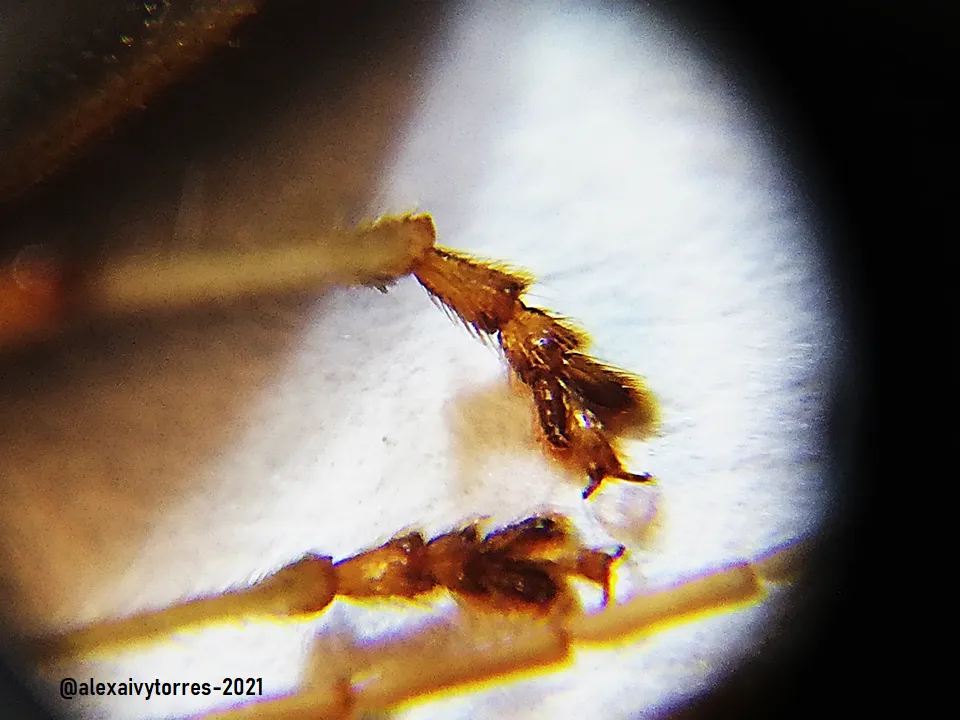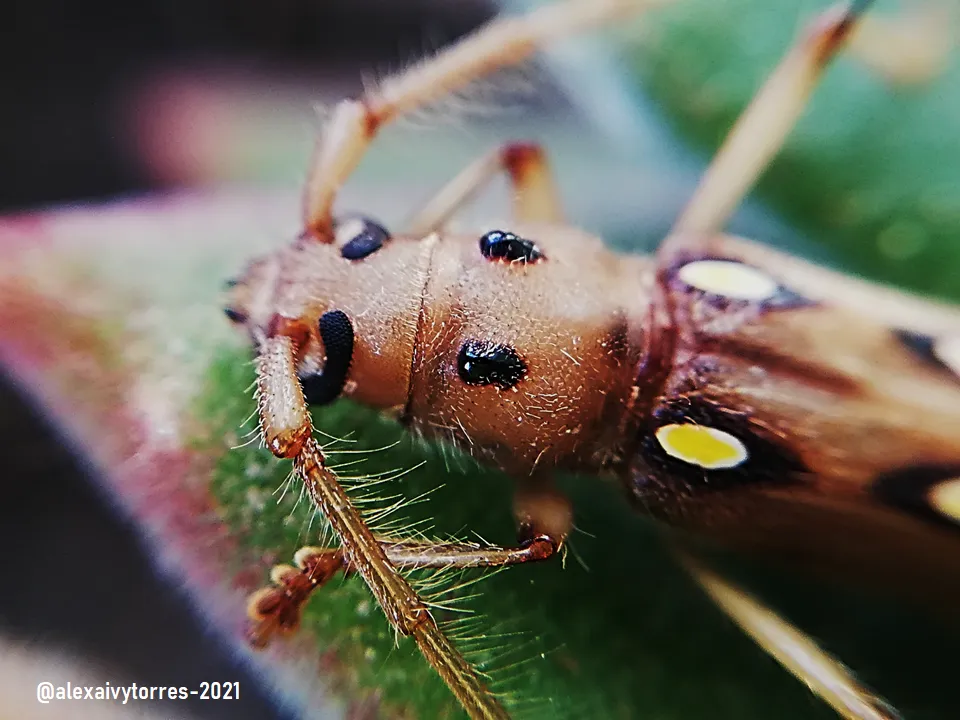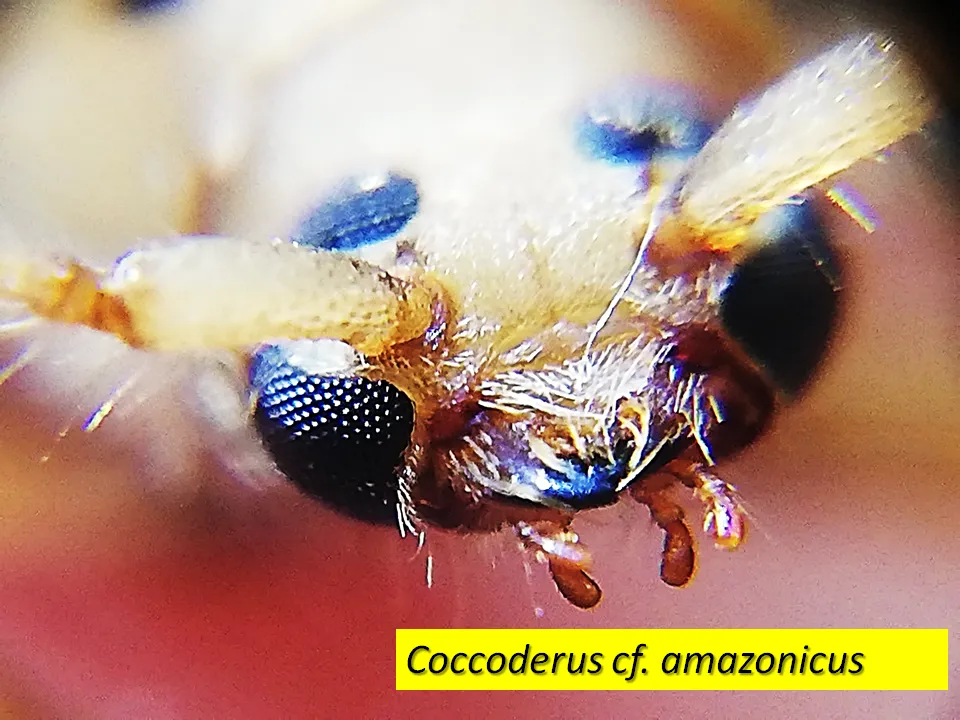
Cada vez que tengo un encuentro cercano con un insecto, me deleito con sus adaptaciones, formas y colores, pues cada uno goza de magia. Estando en la piscina donde practico natación, me encontré un ejemplar que definitivamente pertenecía a la Clase Insecta, Orden Coleóptera. En el momento de la colecta, el ejemplar aparentemente estaba muerto, por eso decidí tomarlo para hacer una descripción en mi serie naturaleza muerta.
Whenever I have a close encounter with an insect, I delight in its adaptations, shapes and colours, as each one enjoys magic. Being in the swimming pool where I practice swimming, I came across a specimen that definitely belonged to the Class Insecta, Order Coleoptera. At the time of collection, the specimen was apparently dead, so I decided to take it for a description in my still life series.
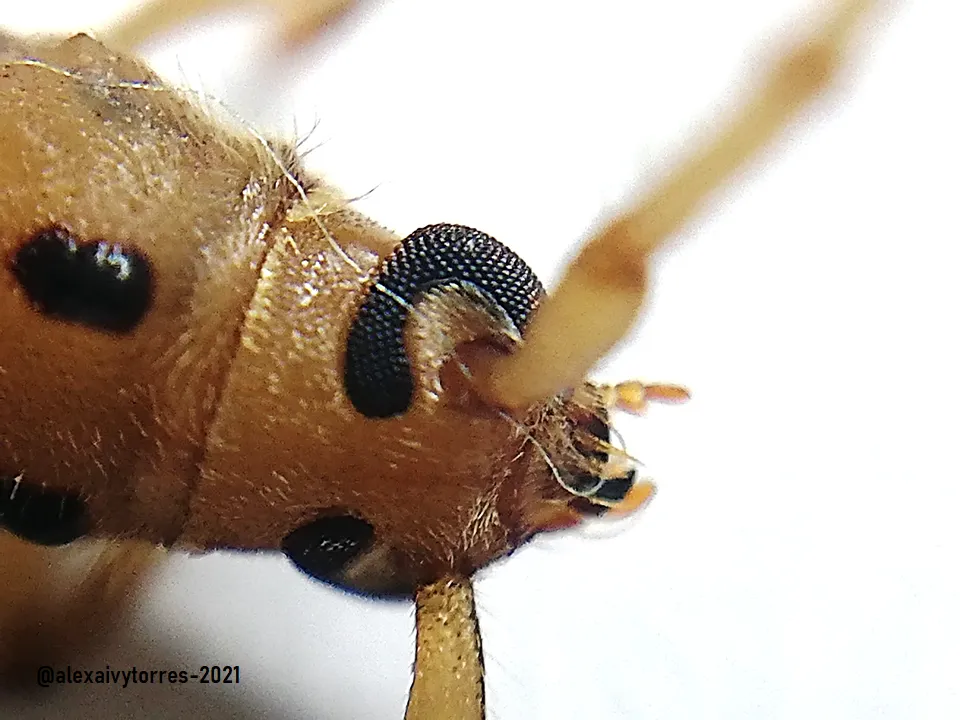
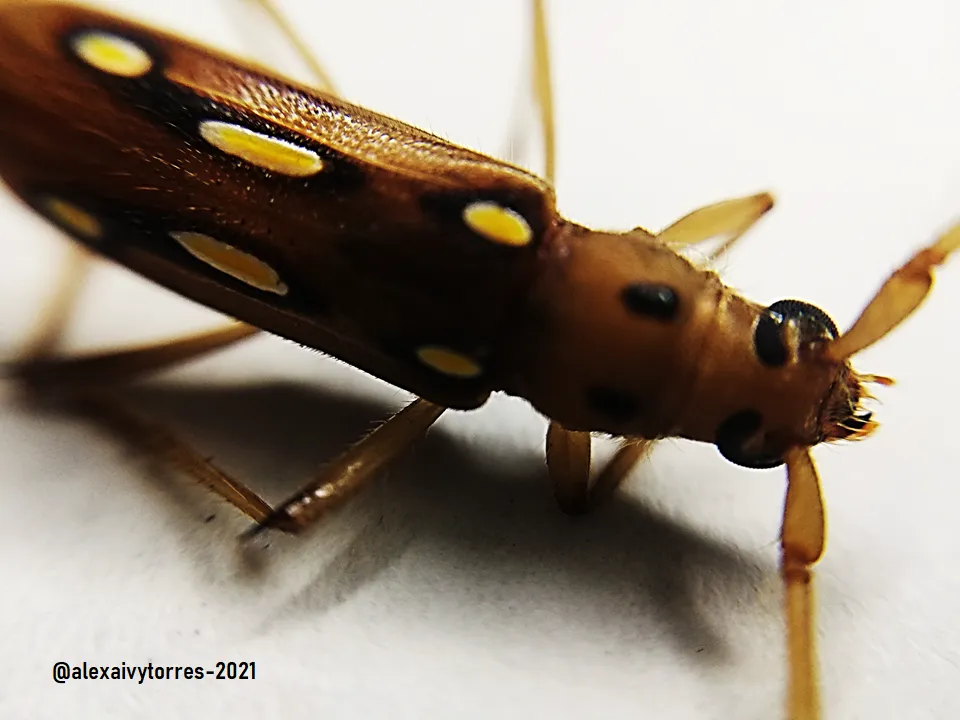
Sin embargo, luego de tres horas en mi sitio de trabajo, después de capturar algunas fotografías decidí tomar un reposo. Al regresar pude observar que, ya sus patas habían cambiado de postura, se encontraba posado de manera firme y al observar sus mandíbulas había movimiento. Esto quiere decir que, ante cualquier amenaza, este coleóptero simula su muerte.
However, after three hours at my work site, after taking some photographs, I decided to take a break. When I came back I could see that its legs had already changed its posture, it was standing firmly and when I looked at its jaws there was movement. This means that, in the face of any threat, this coleopteran simulates its death.
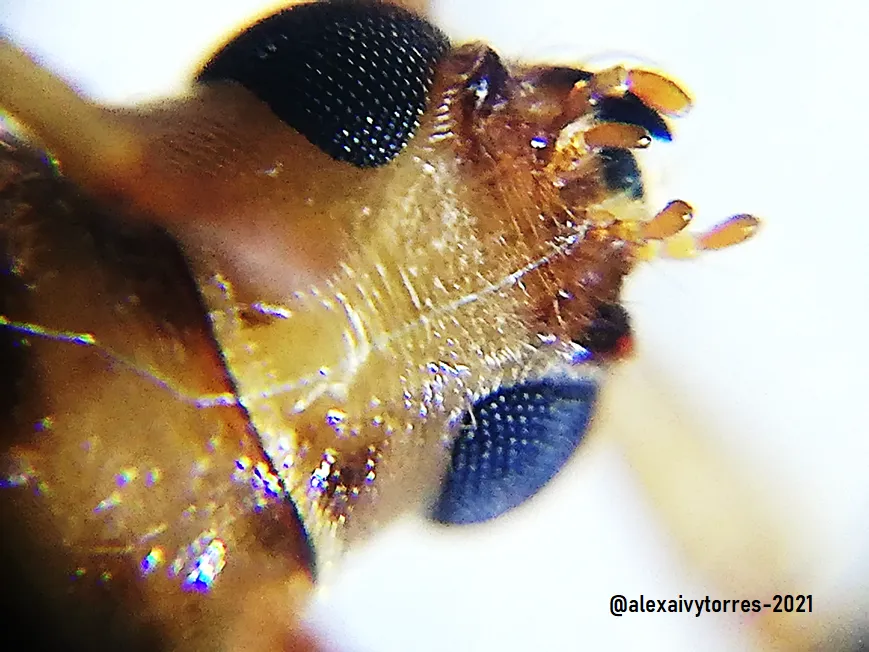

Como insecto, se observan sus tres tagmas bien estructurados. El ejemplar se encuentra completo lo que permitió visualizar ciertos detalles de su anatomía. La Familia Cerambycidae pertenece al Orden Coleóptera, y están abarcados dentro del Suborden Polyphaga. Esto nos indica que se comportan como fitófagas, sobre todo en su etapa larval, alimentándose generalmente de tejido vegetal, en descomposición.
As an insect, its three well-structured tagmae are visible. The specimen is complete, which made it possible to visualise certain details of its anatomy. The Family Cerambycidae belongs to the Order Coleoptera, and they are included in the Suborder Polyphaga. This indicates that they behave as phytophagous, especially in their larval stage, generally feeding on decaying plant tissue.
La diversidad de este grupo es asombrosa en el estado adulto. Tienen una función importante en el ecosistema, pues marcan el inicio en la descomposición del tallo de los vegetales en descomposición.
The diversity of this group is astonishing in the adult stage. They play an important role in the ecosystem, as they mark the beginning of the decomposition of the stems of decaying plants.
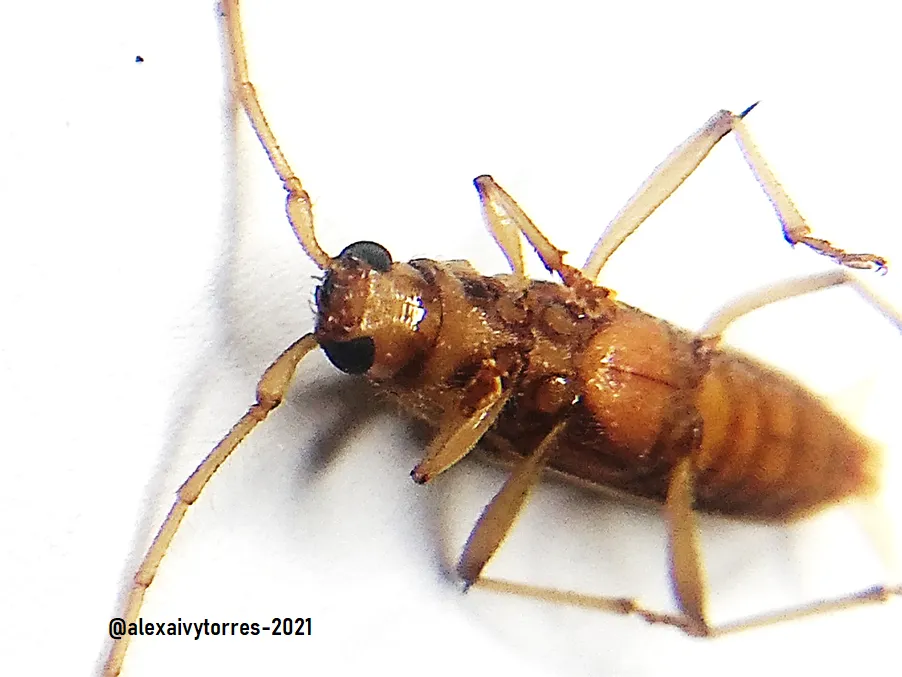
Este ejemplar se muestra alargado, cilíndrico y ligeramente aplanado con simetría bilateral. Su cabeza es larga y resaltan sus antenas, largas, del mismo tamaño o más extensas que su cuerpo, dependiendo del sexo –dimorfismo sexual-. Las antenas presentan pelos o sedas que coadyuvan en el proceso sensorial. Sus ojos compuestos se encuentran en la región dorsal y cerca de este se encuentra la inserción de las antenas. Sus élitros son alargadas y presentan seis manchas blanco-amarillentas que se notan alineadas.
This specimen is elongated, cylindrical and slightly flattened with bilateral symmetry. Its head is long and its antennae are long, of the same size or larger than its body, depending on the sex - sexual dimorphism. The antennae have hairs or silks that aid in sensory processing. Their compound eyes are located in the dorsal region and close to this is the insertion of the antennae. Their elytra are elongated and have six yellowish-white spots in a row.
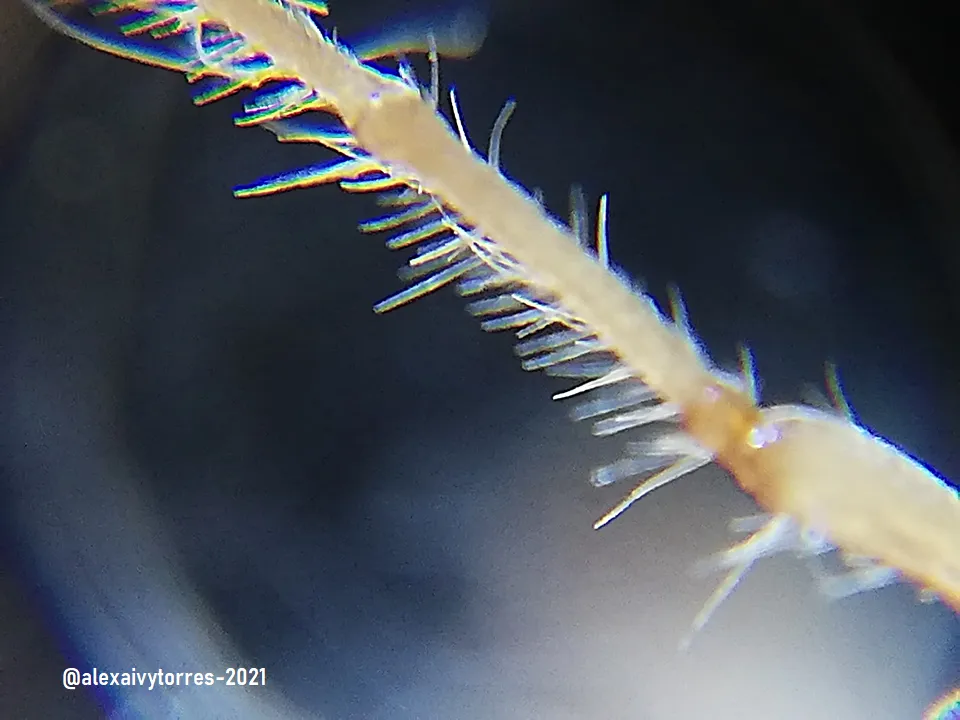
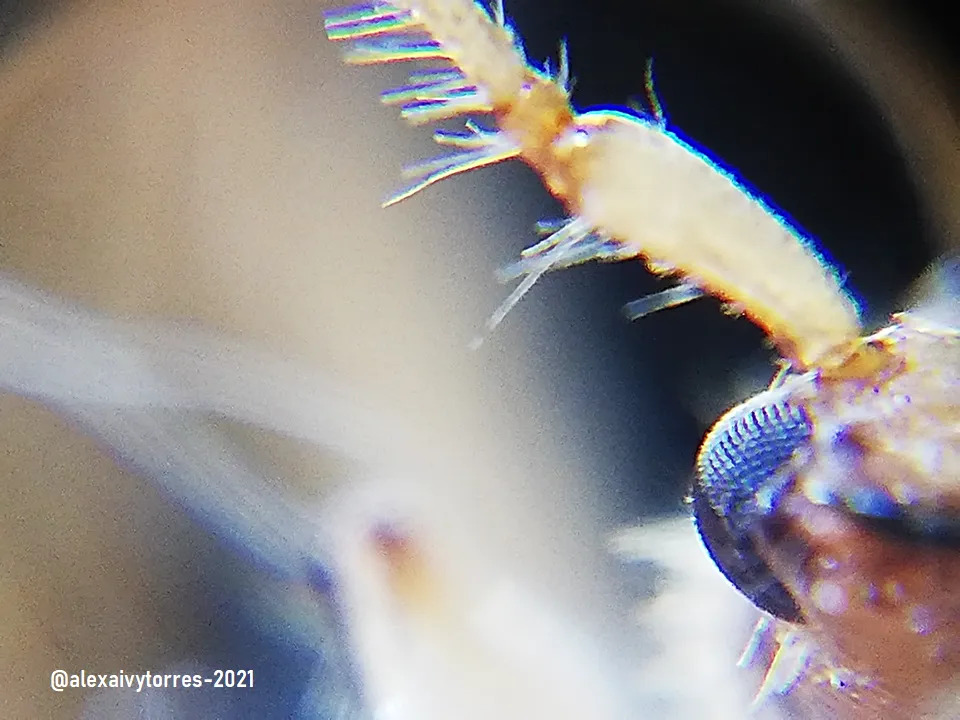
A simple vista se denotan sus tres pares de patas, mostrando fémur, tarso, tibia, oniquio y uñas. En los élitros se observan pelos, y debajo de estos las alas membranosas, tal como se muestra en las imágenes.
The three pairs of legs are visible to the naked eye, showing femur, tarsus, tibia, onychium and nails. On the elytra there are hairs, and below these the membranous wings, as shown in the images.
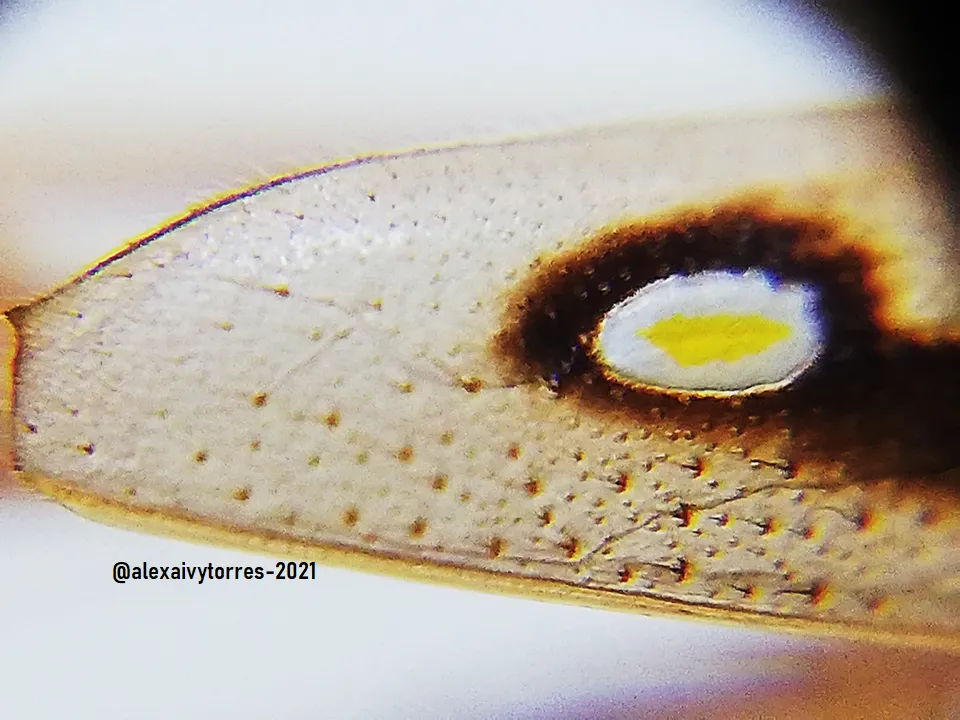
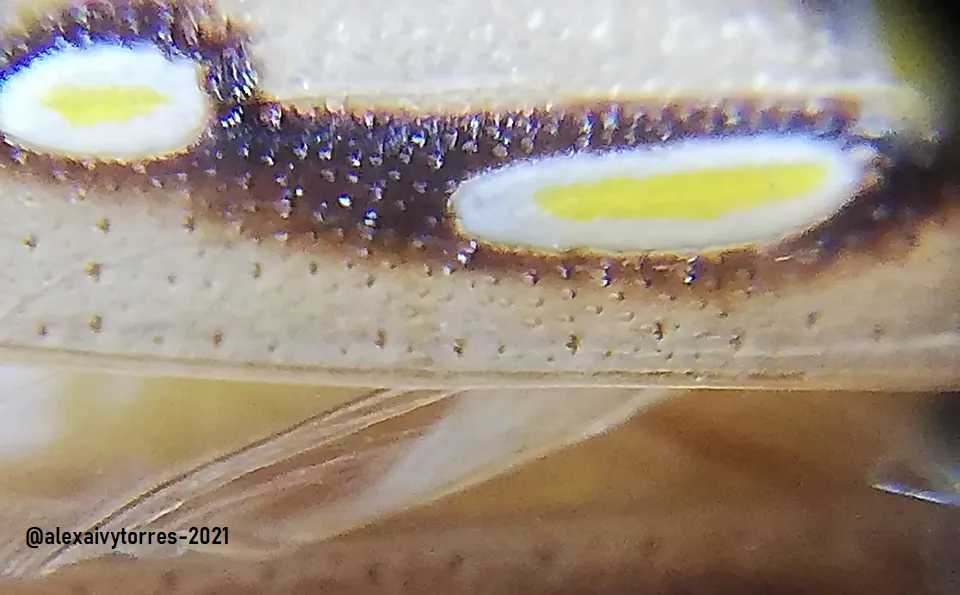
Luego de realizar las observaciones del ejemplar y ayudarse con ciertas aplicaciones web, bajo la asesoría de mi compañero @abneagro hemos establecido que se trata de un ejemplar de Coccoderus cf. amazonicus. La información encontrada sobre este espécimen ha sido muy escasa.
After making observations of the specimen and with the help of some web applications, under the advice of my colleague @abneagro we have established that it is a specimen of Coccoderus cf. amazonicus. The information found on this specimen has been very scarce.

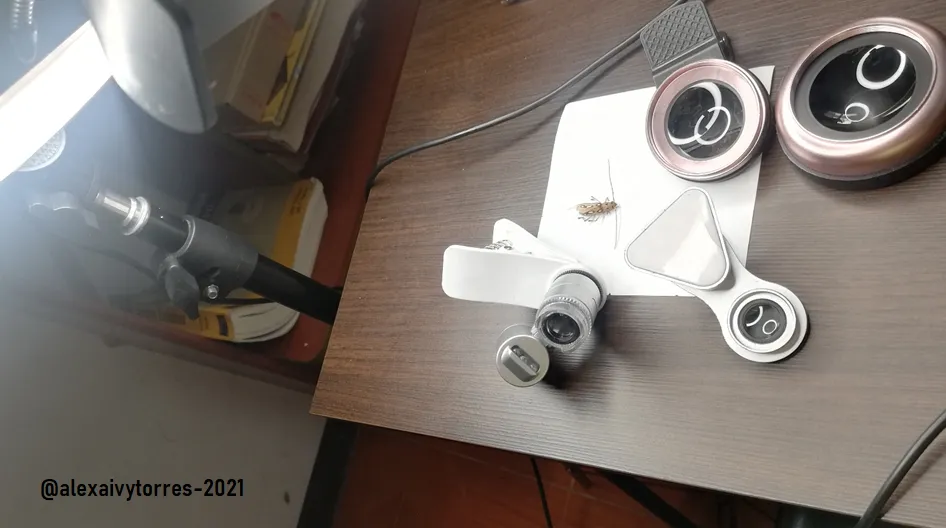
Las imágenes fueron capturadas con la cámara Leica del dispositivo móvil Huawei P20 y con lentillas Macro y micro a 60X en modo profesional y posteriormente editadas en Microsoft Power Point.
The images were captured with the Leica camera of the Huawei P20 mobile device and with Macro and micro lenses at 60X in professional mode and later edited in Microsoft Power Point.
